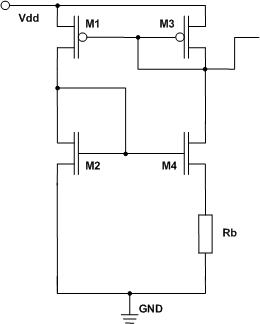fanshuo
Full Member level 5
- Joined
- Jun 21, 2007
- Messages
- 266
- Helped
- 8
- Reputation
- 16
- Reaction score
- 4
- Trophy points
- 1,298
- Location
- Netherlands
- Activity points
- 2,746
Why transistors working in sub-threshold region has the matching problem.
Follow along with the video below to see how to install our site as a web app on your home screen.
Note: This feature may not be available in some browsers.
tyanata said:It is not true, matching of transistors in weak inversion is not influenced by ΔVth.
So in weak inversion transistor have better matching.
malizevzek said:in sub-threshold region, all the device parameter deviations influence the mismatch through exponential term, as opposed to quadratic term in saturation.

tyanata said:So,
I have such a question.
If we have simple bias circuit: two NMOS, two PMOS, and rezistor between source of one of the NMOS and ground.
What is better NMOS to be in weak invesrion or in strong?